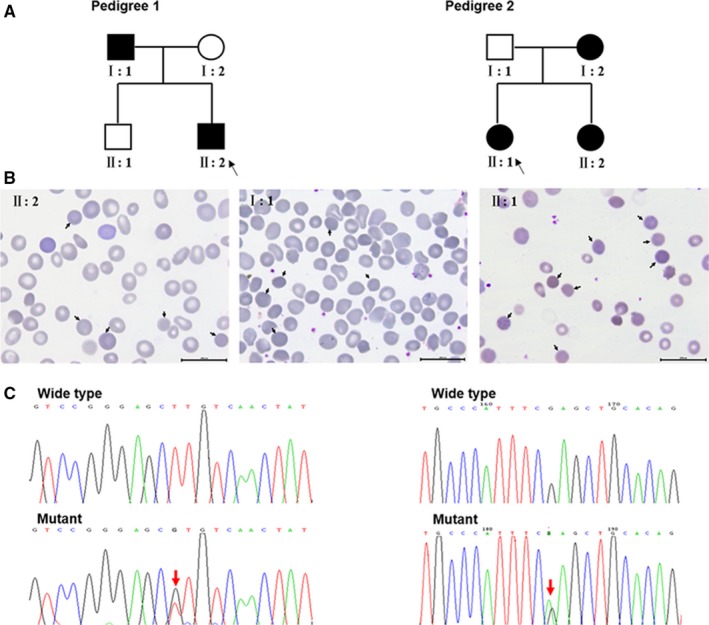Figure 1.

Two unrelated Chinese families with HS‐associated ANK1 mutations. (A) Pedigrees: open symbols indicate unaffected individuals; filled black symbols indicate affected individuals; and black arrows indicate probands. The left is pedigree 1; member I: 1 and II: 2 carry the novel ANK1 mutation (c.T290G, p.L97R), and I: 2 and II: 1 do not have this mutation. The right is pedigree 2; the novel ANK1 mutation (c.C841T, p.R281X) was found in member II: 1, II: 2, I: 1 and was not identified in I: 2. (B) Peripheral blood smears of patients in two pedigrees. Spherocytes are observed in the blood films of the patients in two pedigrees (pedigree 1: member I: 1 and II: 2; pedigree 2: member II: 1) which are indicated by black arrows. (C) Partial DNA sequences containing the two novel heterozygous ANK1 mutations. The upper panels show the wild‐type sequences, and in the lower panels, red arrows indicate the mutation sites
